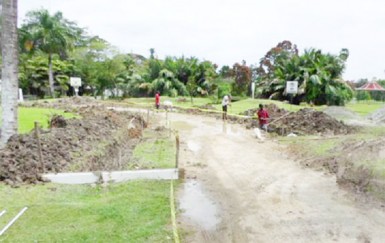The Ministry of Natural Resources and the Environment has started the rehabilitation of the entrance road to the Guyana Zoological Park that will address issues of flooding and erosion.
The work is being done through the Protected Areas Commission and is expected to last three months, the ministry said in a press release. The project is part of a larger effort to rehabilitate and modernise the zoo under the Three Parks Initiative launched by Natural Resources Minister Robert Persaud.
While there are a number of challenges affecting the zoo, this is one small step towards transforming it into a modern facility. A larger master plan for the zoo has been prepared, with support from the Beharry Group of Companies and Conservation International, the press release said.

According to the Commission, the vision of the modernized zoo is to connect local and overseas visitors with the rich natural world that exists just beyond the limits of the urban landscape.
“The overall visitor experience will be one of passing through a series of habitat types which represent different regions in Guyana, such as the mangroves and the savannahs,” the press release said. Efforts are also underway to create larger exhibit spaces that allow animals to roam freely within a more natural habitat.
“This will be key, as over 80% of the animals currently housed at the facility were not collected by the Zoo, but brought in abandoned, injured or as unwanted pets,” the Commission said. It also pointed out that although the zoo does its best to reintroduce these animals back into the wild after rehabilitation, in many cases they remain at the facility as they cannot survive in the wild.
With the planned rehabilitation, the Commission hopes to improve education programmes and install interpretive graphics that inform visitors of Guyana’s unique biodiversity and the importance of leaving the animals in their native habitats. It is also working continuously to engage individuals, businesses and other groups to support rehabilitation efforts. The Commission is willing to allow sponsors to utilise their own contractors and issue payments directly to those contractors, based on agreed designs and specifications; thereby donating completed state-of-the-art enclosures instead of funds.




